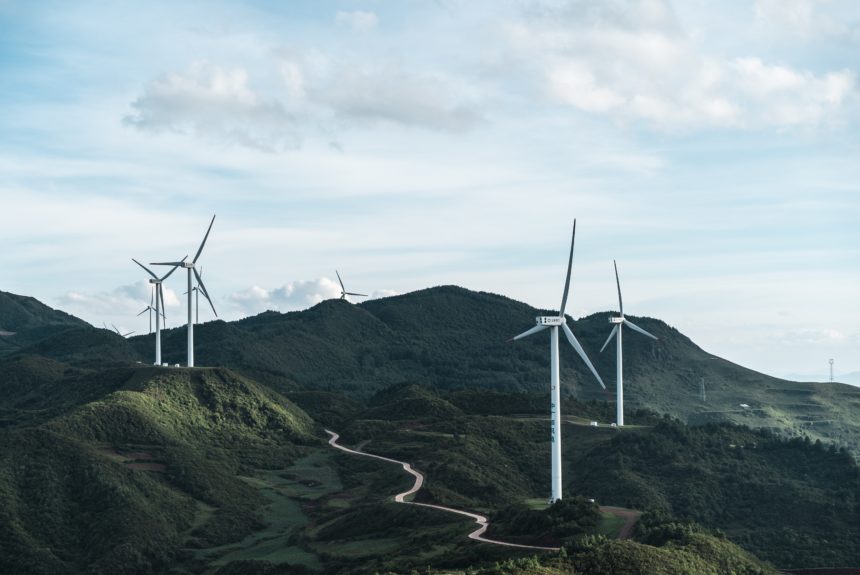Renewable energy tax credits are either the superheroes or the vampires of energy policy. They simply can’t die. At this rate, they deserve a comic book series of their own. Five times in the past two decades, wind and solar tax credits were ready to expire, only to be resurrected in later bills or saved at the last moment.
The latest example passed at the bitter end of the Trump administration, with the wind industry’s production tax credit (PTC) being extended by one year to the end of 2021. Offshore wind projects had a 30 percent credit for projects that begin construction extended several years until 2025.
Solar power came out better as well, receiving a two-year extension of its Investment Tax Credit (ITC) through the end of 2023, with large-scale solar projects receiving funds until the end of 2024.
The year 2020 was supposed to be the year when wind and solar tax credits died. Some people were even excited about attending the funeral. In the 2015 tax credits package, Texas Congressman Joe Barton cut a masterful deal to extend renewable tax credits worth about $75 billion through 2020 in return for a lifting of the export ban on U.S. crude oil. The wind industry argued at the time that as wind technology improved, the 2015 extension be the last one necessary before the industry would be able to stand on its own, with no need for tax credits in the 2020s.
But the 2015 agreement was breached by the most recent tax extenders package; the funeral will have to wait.
The problem with the Superhero world is that all long-term positive human behavior, like the deferring of gratification, gets corrupted. Why save for college or turn down your thermostat when a caped crusader who can swoop in and save your bacon? Have you noticed that no character seems to work or spend money within Superhero comics or movies? How does a capitalist economy work when mistakes are undone by a Deus ex Machina every 30 minutes?
For instance, imagine a well-functioning insurance market where Thanos and Thor destroy five cities in an afternoon, yet no one dies from the explosions?
Exactly.
Any market touched by tax credits get corrupted in a similar fashion. Market signals and price discovery simply don’t work well. Wind and solar farms are built because they are profitable for a small set of Wall Street tax-equity investors, not for the public good. At the same time, electric vehicle rebates go to the wealthiest 10 percent of Americans who can afford a $70,000 car, while the middle and working classes take a bus to work.
Even left-of-center publications like The New Republic complain that tax credits currently operate as a tax shelter for tech companies like Amazon and Google to shrink their tax bills. It turns out JP Morgan, Chase and Bank of America do more than half of the $18 billion per year business and take a cut for themselves. And since 2008, tax equity has been more than twice as expensive as debt financing, undermining the core argument for the policy in the first place.
But instead of letting nature run its course, the Biden administration is looking to take tax credits to the next level. The current White House plan would extend “clean energy” tax credits for 10 years’ worth tens of billions of dollars and recommends a “direct pay” system to let renewable energy developers receive direct payments – cash – instead of a tax credit.
“This is something that has never been done to a business in this country,” said Mike McKenna, a former White House Congressional liaison and energy lobbyist in a interview with C3 Solutions. “You are starting to edge very close to nationalizing industry.”
McKenna says wind and solar generally can’t pay for themselves without federal subsidies or state mandates. But he warns “direct pay” will create even worse consequences if and when Republicans come back into power since direct payments are even more abhorrent to Republican views on energy policy than tax credits.
“The next time the Republicans get on top of this game, those things are all going to die, and not a slow death, but as soon as Republicans get control,” said McKenna. “Five years from now, there is going to be a hell of a lot of bankruptcies in the solar and wind worlds when all those direct payments go away. That’s something everyone should be trying to avoid, not encourage.”
In a Superhero world, reality returns when the screen goes black. In the real world, where mistakes can’t be edited out or rewritten, misallocating tens and even hundreds of billions of dollars of taxpayer resources over a series of years can have serious political and economic consequences for families, businesses and the environment. U.S. consumers currently have some of the least expensive retail electricity prices in the developed world. In the end, someone will be paying for these investments in the form of higher energy prices, or worse yet, generalized, long-term inflation. And less economic freedom means a dirtier environment.
And no one will come swooping down to save us from that.
William Murray has written about energy markets and environmental policy for the past two decades for Bloomberg, RealClearPolitics, and others. More recently he was the senior speechwriter at the Environmental Protection Agency.
The views and opinions expressed are those of the author’s and do not necessarily reflect the official policy or position of C3.
